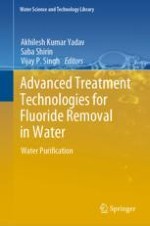2023 | OriginalPaper | Buchkapitel
19. Future Frameworks for Fluoride and Algorithms for Environmental System
verfasst von : Mridu Kulwant, Divya Patel, Saba Shirin, Shiv Nath Sharma, Akhilesh Kumar Yadav
Erschienen in: Advanced Treatment Technologies for Fluoride Removal in Water
Verlag: Springer Nature Switzerland
Aktivieren Sie unsere intelligente Suche, um passende Fachinhalte oder Patente zu finden.
Wählen Sie Textabschnitte aus um mit Künstlicher Intelligenz passenden Patente zu finden. powered by
Markieren Sie Textabschnitte, um KI-gestützt weitere passende Inhalte zu finden. powered by
